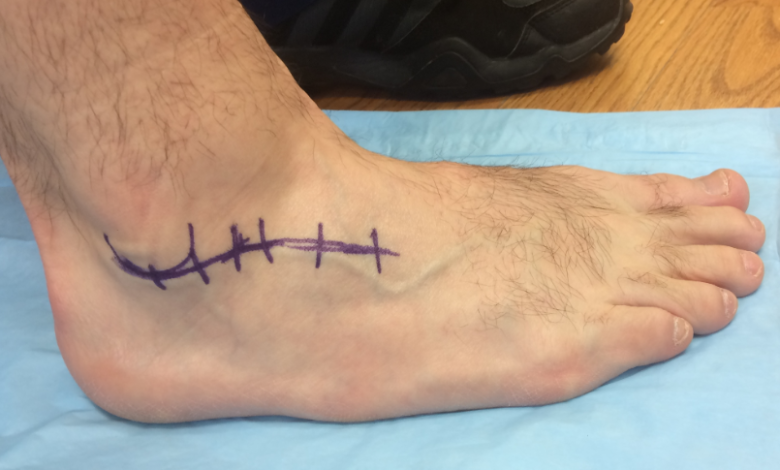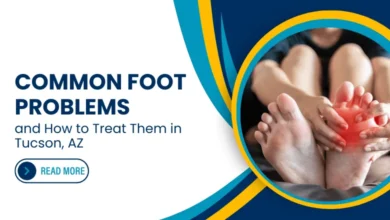The Benefit of Triple Arthrodesis Treatment

Introduction: Triple arthrodesis is a surgical procedure that involves fusing three joints in the foot the talocalcaneal, talonavicular, and calcaneocuboid joints. This procedure is typically performed to treat severe foot conditions such as arthritis, flatfoot deformity, and the tarsal coalition that have not responded to conservative treatments.
Triple arthrodesis aims to provide patients with a more stable and functional foot by eliminating painful movement in the fused joints. In this article, we will provide an overview of the triple arthrodesis procedure, its indications, and what patients can expect during the recovery process.
Procedure
The triple arthrodesis procedure is typically performed under general anesthesia and can take several hours to complete. Here are the steps involved in the procedure:
- Anesthesia: The patient is put under general anesthesia to ensure they are comfortable and do not experience any pain during the procedure.
- Incision: The surgeon makes an incision on the side of the foot to gain access to the three joints that will be fused.
- Preparation of the bones: The cartilage is removed from the surfaces of the bones that make up the three joints. The surfaces of the bones are then roughened up to promote fusion.
- Fusion of the three joints: The surgeon will place the bones in the correct position and then use screws and/or plates to hold them in place. Bone grafts may also be used to help promote fusion between the bones.
- Fixation with screws and/or plates: The surgeon will use screws and/or plates to hold the bones in place while they fuse together.
- Closure of the incision: The surgeon will close the incision with sutures or staples.
After the procedure is completed, the patient’s foot is typically placed in a cast or brace to allow for proper healing. It can take several months for the bones to fully fuse together and for the foot to fully heal.
Indications
Triple arthrodesis is indicated for a range of foot conditions that are causing pain, deformity, and dysfunction. Some of the most common indications for triple arthrodesis include:
Arthritis
When the cartilage in the joints of the foot breaks down, it can lead to bone-on-bone contact, inflammation, and pain. Triple arthrodesis can be used to fuse the affected joints, eliminating painful movement and providing a stable and functional foot.
Flatfoot deformity
A flatfoot deformity can occur when the arch of the foot collapses, causing the foot to roll inward. This can cause pain, difficulty walking, and an increased risk of injury. Triple arthrodesis can be used to realign the foot and provide stability.
Tarsal coalition
Tarsal coalition is a condition where the bones in the back of the foot are abnormally fused together. This can cause pain and stiffness in the foot. Triple arthrodesis can be used to separate the bones and improve mobility.
Post-traumatic arthritis
After a traumatic injury to the foot, the joint surfaces can become damaged, leading to arthritis. Triple arthrodesis can be used to fuse the affected joints and reduce pain and inflammation.
Overall, triple arthrodesis is indicated for foot conditions that have not responded to conservative treatments and are causing significant pain, deformity, and dysfunction. The decision to undergo triple arthrodesis should be made in consultation with a qualified orthopedic surgeon.
Recovery
Recovery from triple arthrodesis can take several months and involves a combination of rest, rehabilitation, and physical therapy. Here are some things patients can expect during the recovery process:
Post-operative care
Patients will need to keep the foot elevated and apply ice to reduce swelling and pain. Pain medication will also be prescribed to manage discomfort.
Rehabilitation and physical therapy
Once the foot has healed sufficiently, patients will begin a rehabilitation program that involves exercises to strengthen the foot and improve the range of motion. A physical therapist will work with the patient to develop a program that is tailored to their specific needs.
Weight-bearing restrictions
Patients may need to use crutches or a walker to keep weight off the affected foot for several weeks to allow the bones to fuse together.
Follow-up appointments
Patients will need to schedule follow-up appointments with their surgeon to monitor the progress of their recovery and ensure that the foot is healing properly.
Possible complications
While complications from triple arthrodesis are rare, patients should be aware of the possible risks, such as infection, blood clots, or nerve damage.
Expected outcomes
After recovery, patients can expect to have a more stable and functional foot, with reduced pain and improved mobility. However, it is important to note that the recovery process can take several months, and the full benefits of the procedure may not be evident for up to a year.
Overall, the recovery process from triple arthrodesis requires patience and dedication to the rehabilitation process. Patients should work closely with their healthcare team to ensure the best possible outcomes.
Conclusion
Triple arthrodesis is a surgical procedure that can be used to treat a range of foot conditions that have not responded to conservative treatments. By fusing the talocalcaneal, talonavicular, and calcaneocuboid joints, triple arthrodesis can provide patients with a more stable and functional foot, reducing pain and improving mobility. However, the procedure requires a significant recovery period and a commitment to rehabilitation and physical therapy.
Patients should work closely with their healthcare team to ensure the best possible outcomes and be aware of the possible risks and complications associated with the procedure. Overall, for patients with severe foot conditions that are impacting their quality of life, triple arthrodesis can provide a viable treatment option.




